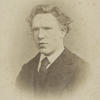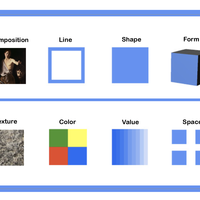Vincent van Gogh’s Edge of Wheat Field with Poppies happens to be the only van Gogh painting in the collections of the Denver Art Museum.
It came to the museum as part of a large donation (the largest ever received by the museum) of 22 other paintings, most of them by Impressionist artists such as: Monet, Cezanne, Manet, and Renoir, given by mega-donor Frederic C. Hamilton, whose name happens to be on the 2006 building designed by Daniel Libeskind.
While not one of van Gogh’s more well-known works, (it was in a private collection for many years) it’s still a van Gogh, and yet, strangely enough, this painting is not currently on display in the museum, although it has been part of a previous exhibition. It may be undergoing some conservation work, or maybe the museum hasn’t found just the right place to hang it yet. It can be difficult, after all, to figure out where to put a painting by one of the most famous artists in the world.
Edge of Wheat Field with Poppies at one time belonged to Willemien van Gogh, Vincent’s youngest sister; she may have taken the painting home with her while visiting Theo, Vincent’s brother, in Paris. This would have been after Vincent left Paris and moved along to Arles, in the south of France.
Vincent loved to paint outdoors (en plein-air) and fields, flowers, and trees, especially cypress trees, were among his favorite subjects. Most people are aware of van Gogh’s sunflowers, irises, and wheat fields, but he also liked poppies, which show up in several of his paintings. This one was painted while he was living in Paris, so the location was probably somewhere on the outskirts of the city. Vincent had no qualms about walking for miles to find places and subjects to paint, so this would have been just another day at work for him.
So what does a tired, struggling artist do after a hard day’s painting? Well, if you’re Vincent van Gogh, and you live in Paris, you spend quite a bit of time at the local cafes, where you drink copious amounts of absinthe and discuss art with other artists. Besides painting, writing, and walking, this was one of Vincent’s favorite activities; he even used the color of absinthe to describe the sky and water in one of his sketches! At the end of the day, let’s just hope that the Denver Art Museum will soon find a place for this work.




















I like this painting because it paints a very beautiful picture of autumn. The yellow wheat field in the picture gives me a feeling of harvest.